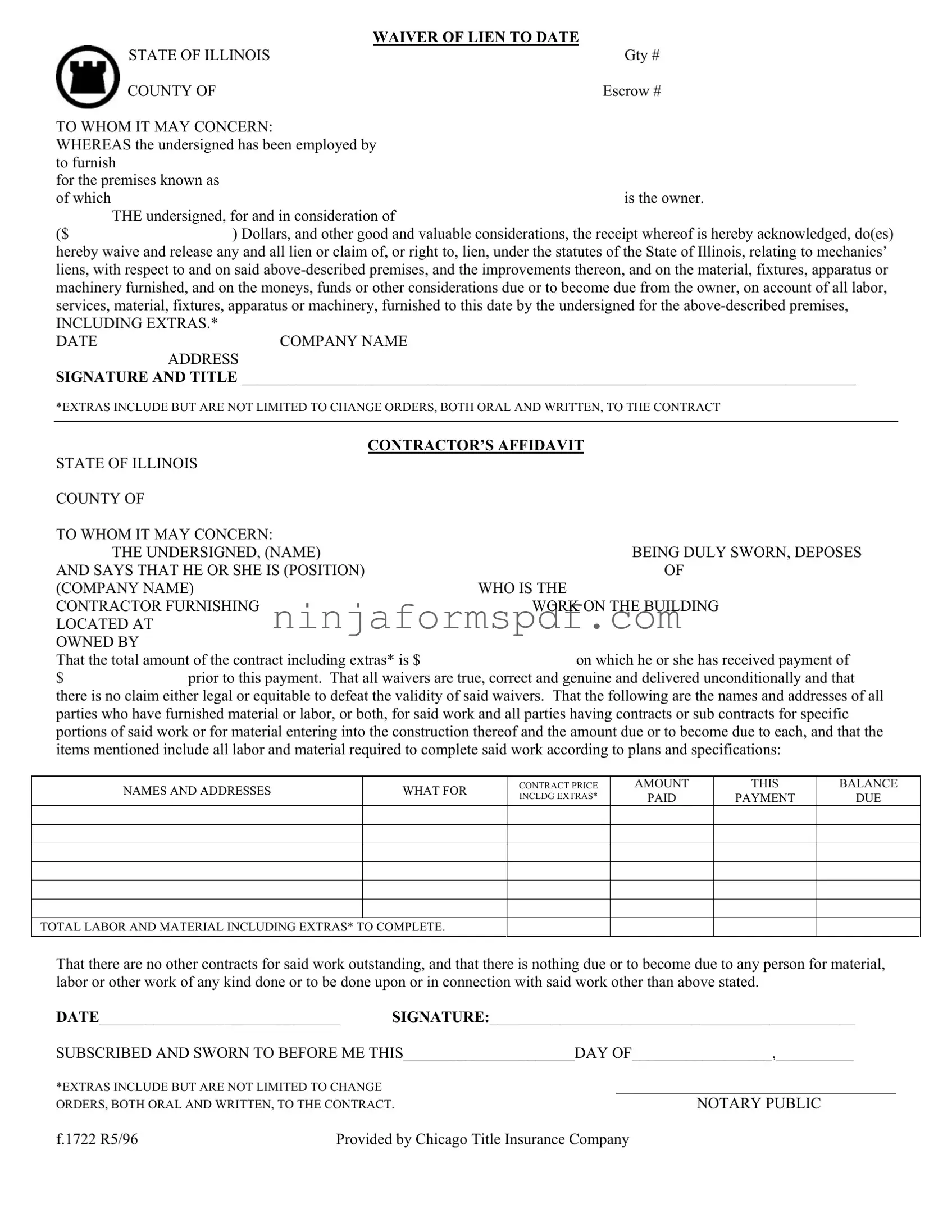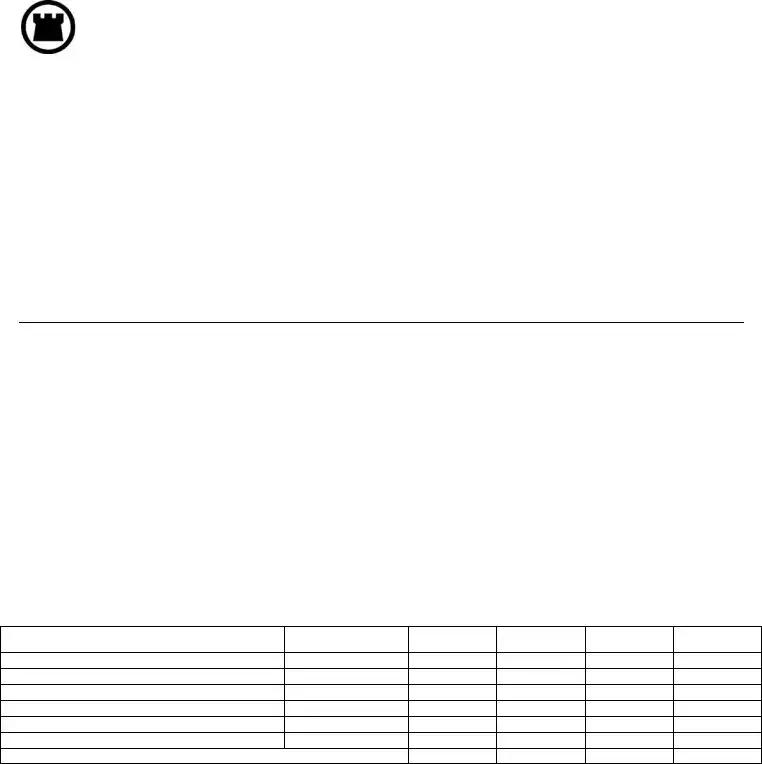What is a Chicago Title Waiver Format form?
This form is a legal document used in the construction industry in Illinois. It allows a contractor, subcontractor, or supplier to waive and release any lien rights or claims they might have on a property, in exchange for payment. It covers labor, services, materials, and other considerations provided up to the date specified in the waiver.
Why would someone need to use this form?
Property owners, contractors, or subcontractors might use this form during a construction project to ensure that there are no legal claims or liens on the property related to the work performed. It's a way to clear the property title of any potential liens, making transactions smoother, particularly in sales or refinancing situations.
What are "extras" as mentioned in the form?
"Extras" refer to additional work or materials not originally specified in the main contract but later added, either through change orders or informal agreements. These could include additional labor or materials required to complete the project according to new plans or specifications.
Is this form legally binding?
Yes, once signed, the Chicago Title Waiver Format form is a legally binding document. By signing it, the signatory officially waives their right to place a mechanic’s lien on the property in question, acknowledging receipt of payment for their services or materials provided.
Can this form be used outside of Illinois?
While this form is specifically designed for use in Illinois, following its guidelines and structure for lien waivers might be helpful in other jurisdictions. However, it's crucial to consult with a local attorney since lien laws can vary significantly from state to state.
What is a Notary Public’s role in this document?
A Notary Public verifies the identity of the signatory, ensuring that the person signing the document is indeed who they claim to be. The notarization process adds a layer of fraud prevention and legal authentication to the document, making it more difficult to contest the waiver's validity.
What is the Contractor’s Affidavit mentioned in the form?
The Contractor’s Affidavit is a sworn statement by the contractor confirming the total contract amount, payments received, and acknowledging that all waivers provided are genuine and delivered unconditionally. It also lists all parties involved in the project, the material or labor they provided, and the balance due to each, ensuring transparency and accountability.
How does one ensure the waiver is completed correctly?
Ensure all information is filled out accurately, including the company name, address, project details, and the exact amount paid. Both parties—the one providing the waiver and the one receiving it—should review the document thoroughly to ensure all details are correct and agree upon before signing.
Are there any consequences of not using a Chicago Title Waiver Format form?
Not using a lien waiver can lead to complications in clearing the title to the property, potentially impacting the property’s sale or financing. Mechanic’s liens can create legal disputes and financial liabilities for property owners, making the waiver a crucial step in the construction payment process.
Where can someone obtain a Chicago Title Waiver Format form?
This form is typically provided by the Chicago Title Insurance Company or a legal professional familiar with construction law in Illinois. It's also advisable to consult with a legal expert to ensure that the form meets all the specific requirements of your project and jurisdiction.

